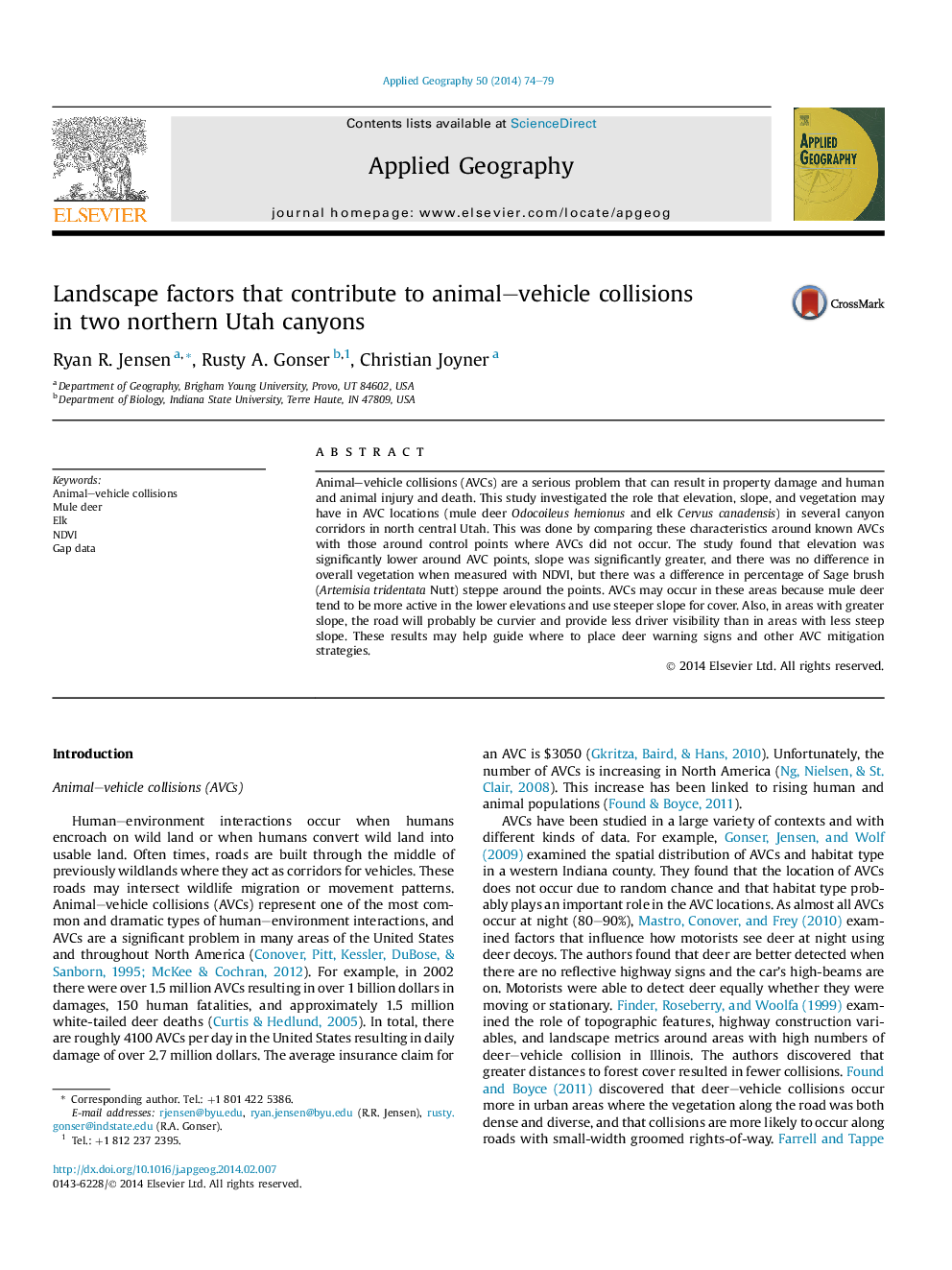| کد مقاله | کد نشریه | سال انتشار | مقاله انگلیسی | نسخه تمام متن |
|---|---|---|---|---|
| 83538 | 158725 | 2014 | 6 صفحه PDF | دانلود رایگان |
• Animal–vehicle collisions (AVCs) are serious problems.
• Elevation, slope, and vegetation were studied around AVCs in northern Utah canyons.
• Elevation was significantly lower and slope significantly greater around AVCs.
• However, Sage brush steppe was more commonly found around the control points.
• These results may help inform AVC mitigation strategies.
Animal–vehicle collisions (AVCs) are a serious problem that can result in property damage and human and animal injury and death. This study investigated the role that elevation, slope, and vegetation may have in AVC locations (mule deer Odocoileus hemionus and elk Cervus canadensis) in several canyon corridors in north central Utah. This was done by comparing these characteristics around known AVCs with those around control points where AVCs did not occur. The study found that elevation was significantly lower around AVC points, slope was significantly greater, and there was no difference in overall vegetation when measured with NDVI, but there was a difference in percentage of Sage brush (Artemisia tridentata Nutt) steppe around the points. AVCs may occur in these areas because mule deer tend to be more active in the lower elevations and use steeper slope for cover. Also, in areas with greater slope, the road will probably be curvier and provide less driver visibility than in areas with less steep slope. These results may help guide where to place deer warning signs and other AVC mitigation strategies.
Journal: Applied Geography - Volume 50, June 2014, Pages 74–79
